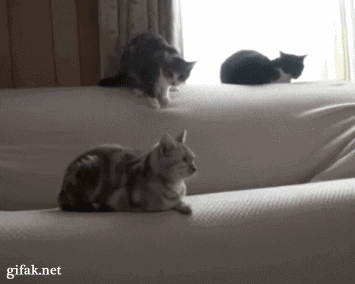So…it’s
been a while since I blogged mainly because there hasn’t been much to write about.
My summer field season was suuuppper slow and filled with many road bumps.
Snakes, unfortunately, are not very active during drought times (just ask Mike Cardwell). However, I have been working on a post about an extraordinary
rattlesnake behavior that I recorded in three individuals; cannot give you
any details at the moment, but I plan to write a Herpetological Review
article about it once I gather more insight from other snake researchers. Stay
tuned. Anyway, this post is not about that, but about the first publication to
stem from my dissertation research (and my second publication overall). Woohoo!
 |
| When they encounter a rattlesnake, squirrels approach it and waive their tails back and forth (a behavior aptly called tail flagging) |
Squirrels tail flag (a vertical side-to-side motion of the
tail) to deter snake predators (both rattlesnakes and gopher snakes). Tail
flagging deters snakes because it signals to them that they have been
discovered, and because snakes rely on surprise to attack prey, their likelihood of
hunting success drops significantly. So after receiving tail flagging displays
from squirrels, snakes relocate to a new hunting site where prey are unaware of
its hidden location (Barbour and Clark 2012). There’s just one problem with tail flagging: squirrels use
it most often when no snake is present. Are squirrels dishonestly advertising their
discovery of a snake? This was the
question I sought to answer.
 |
| Is tail flagging a dishonest signal? |
Many animals use signals similar to tail flagging to advertise their awareness of predators. However, these animals also exhibit their signals when predators are absent. This is a common phenomenon!
Just like ground squirrels, these two bird species, the moorhen
(left) and motmot (right), flick their tails in the absence of predators.
(http://therattlingcrow.blogspot.com/2013/09/tail-flicking-moorhens.html,
http://www.billholsten.com/apps/photos/photo?photoid=108157093)
(left) and motmot (right), flick their tails in the absence of predators.
(http://therattlingcrow.blogspot.com/2013/09/tail-flicking-moorhens.html,
http://www.billholsten.com/apps/photos/photo?photoid=108157093)
Why
would animals signal to predators when no predator is around? The idea is that
they are not signaling their awareness of a predator, but their
readiness for a surprise attack from hidden predators (this is also called vigilance).
Vigilant animals that are prepared for an attack should be harder to catch than non-vigilant animals. But in order to test the hypothesis that
animals signal vigilance in the absence of predators, we need to simulate predator
attacks on signaling and non-signaling prey and then record their responses. We
predict that signaling prey will escape more effectively than non-signaling
prey.
Unaware individuals should not respond effectively to surprise attacks.
And so this is exactly what I did! I simulated rattlesnake
strikes on tail-flagging and non-tail-flagging squirrels and filmed their
responses using a high speed video camera. You may be wondering how I simulated
a snake strike. Well, I didn’t have to do too much work because a strike-simulator
already exists on the market and it’s called the “Snake in a Can Prank.”
Inspiration for the strike-simulating device
I modified these prank
toys and shot them at unsuspecting squirrels. I tested squirrel responses to
the strike-simulator under three treatments that affected their tail-flagging:
1) No Snake Present, 2) Snake Present, and 3) Recent Snake Encounter. Most
squirrels did not tail flag when no snake was present (No Snake), squirrels
actively interacted with a present rattlesnake (Snake Present), and squirrels
maintained tail flagging behaviors after recently encountering a snake that was
no longer present (Recent Snake). The Recent Snake treatment is unique because it
decouples the effect of predator presence from tail flagging.
And now…the Results. Squirrels in the Recent Snake treatment
(tail flagging in the absence of predators) were more effective at evading surprise
attacks than squirrels in the other two treatments. This was just what I
expected. Tail flagging in the absence of snakes associated with faster
reaction times and escape speeds.
Furthermore, these squirrels used unique ninja-like maneuvers to flee from the attack (unlike squirrels in the other two treatments which mostly ran away from the attack). Vigilant squirrels leapt either vertically or horizontally, contorting their bodies, and using their tails to propel them through the air. This type of flee maneuver makes sense if one is trying to escape a rattlesnake strike. Strikes are extremely fast, but once a snake strikes, it cannot alter its strike trajectory. Thus, it’s better to move outside of the plane of the strike than the try to outdistance it (which is probably ineffective considering the speed at which a rattlesnake can strike).
WATCH A VIDEO OF NINJA SQUIRRELS!:
My study called, The fear of unseen predators: ground squirrel tail flagging in the absence of snakes signals vigilance, can be found in a future issue of the journal, Behavioral Ecology. Advanced access to this publication can be found here.







